How to hike in snow: the info you need to know
Our guide to how to hike in snow helps you plan ahead and make a few key amendments to your walking technique so you can have fun in all conditions
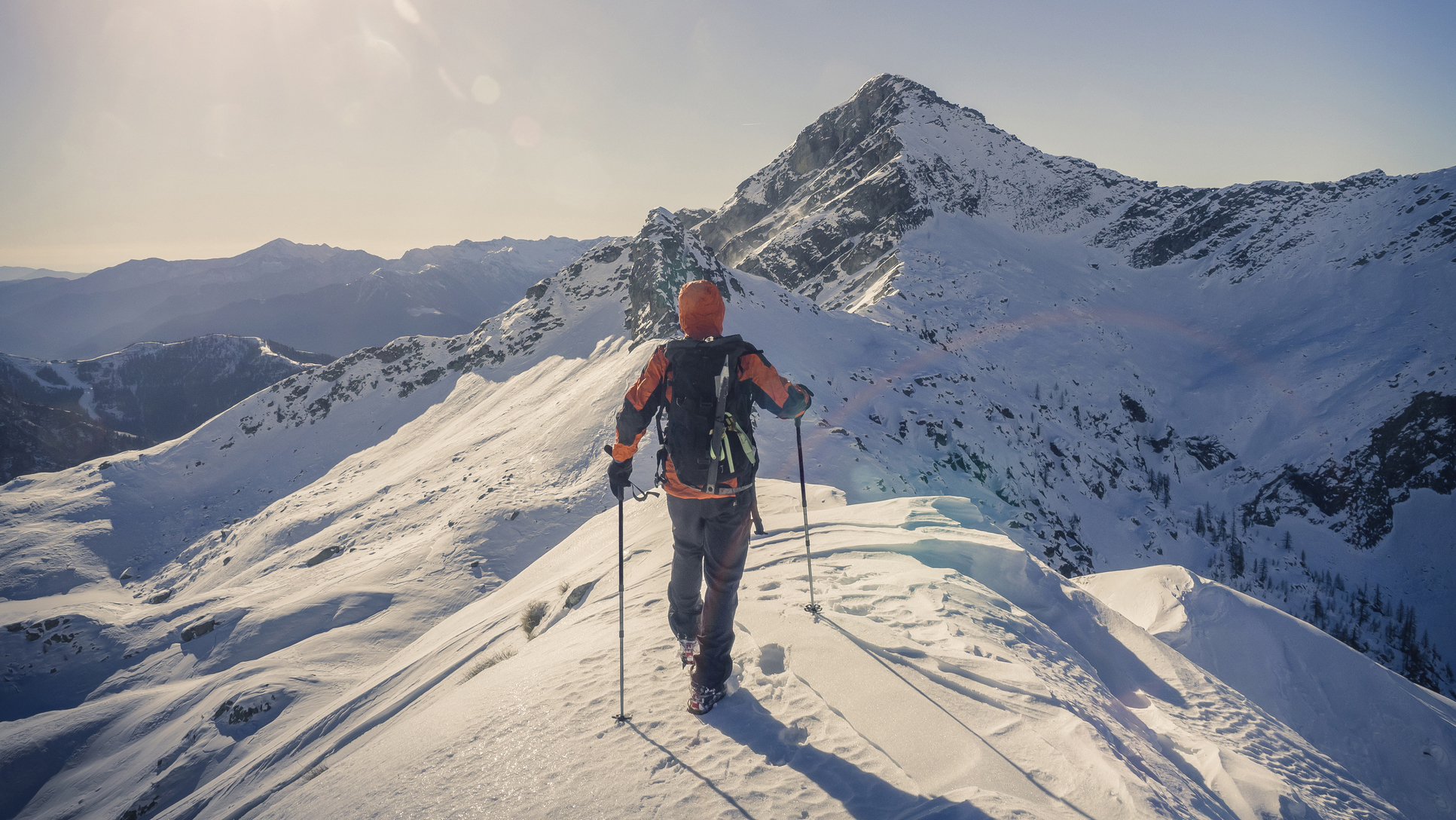
Hiking through crisp snow is breathtakingly beautiful, but it’s also more difficult and tiring than regular hiking, especially if you’re unprepared. Of course, at some point, hiking in snow becomes mountaineering and the equipment you'll need to stay safe also changes markedly. It's all to do with the sort of terrain you plan to tackle.
Our guide on how to hike in snow helps you to plan ahead, make a few small adjustments to your walking technique and stay on track so you can have fun in all conditions. If you’re going to be hiking in snowy conditions a lot, you’ll also want to get yourself a pair of the best winter hiking boots, as well as taking a look at our winter hiking tips and reading our article on avalanche safety if you’re going up steep slopes.
Meet the expert
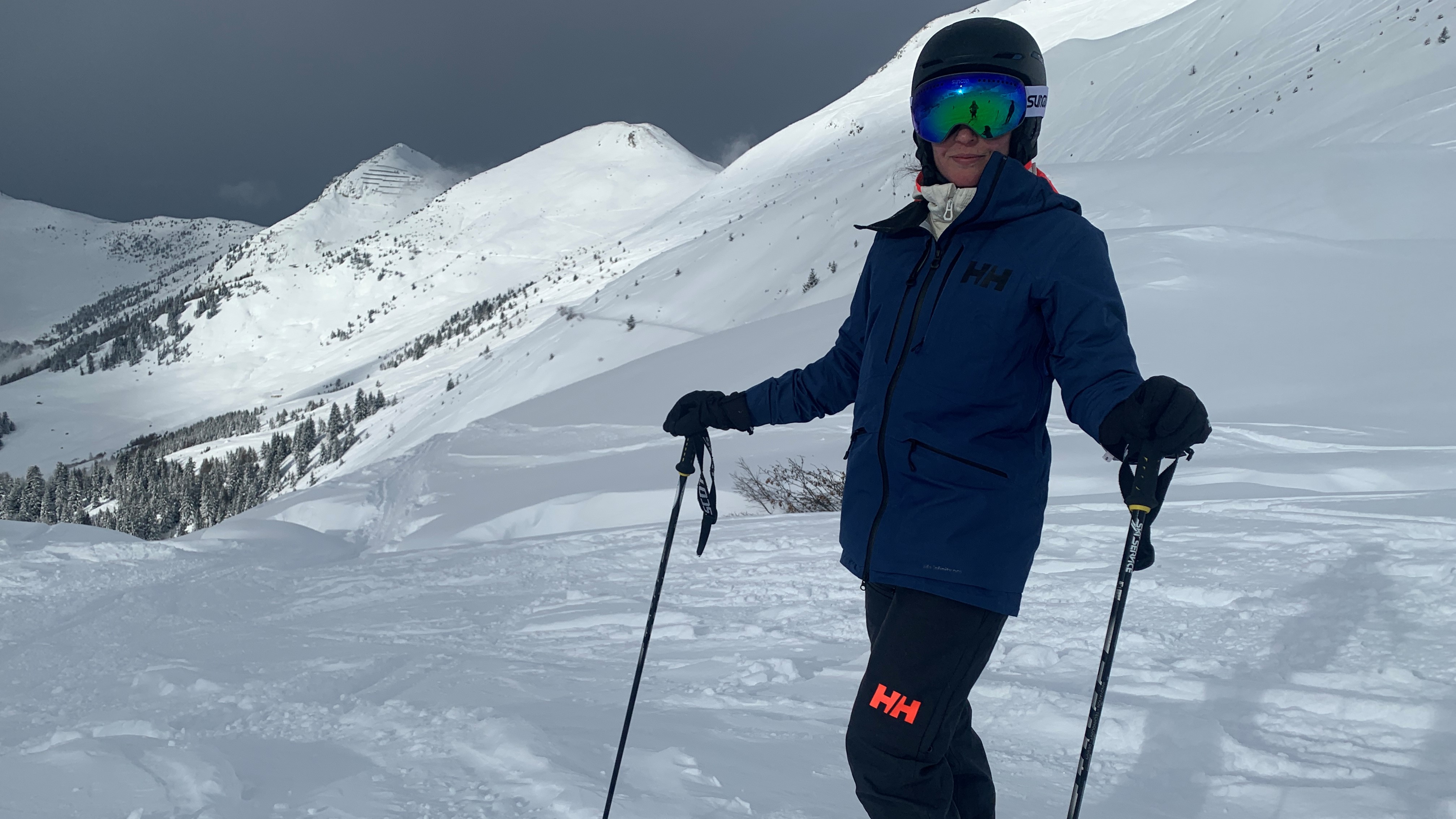
Julia has been heading out in winter for many years, both in Europe and the States. She moved the US for university, where she grew a love of the American wilderness. Now back in her native Scotland, she enjoys getting out when the Highlands has its winter coat on.
Today's best deals
How to hike in snow: going uphill
- Take exaggerated steps by bringing your knee up much higher than you normally would to get your foot clear of the snow, then keep your weight back a bit as you stamp your foot into the snow to make sure what you’re stepping into is safe.
- Kick your toe hard into the snow if you’re ascending a steep slope. This action is one of the reasons winter boots have reinforced toes.
- Make sure your front foot is stable before shifting all your weight into it.
- Try the duck walk if the snow feels slippery, by turning your toes out.
- Zigzag up steeper ground, thus lessening the gradient.
- If you you've got an ice axe, carry it by the head in the uphill hand and use it like a trekking pole, planting the spike into the snow with each step.
- If the ground is so steep that you need to use the pick of an ice axe, you've strayed off hiking territory and firmly into winter climbing ground.
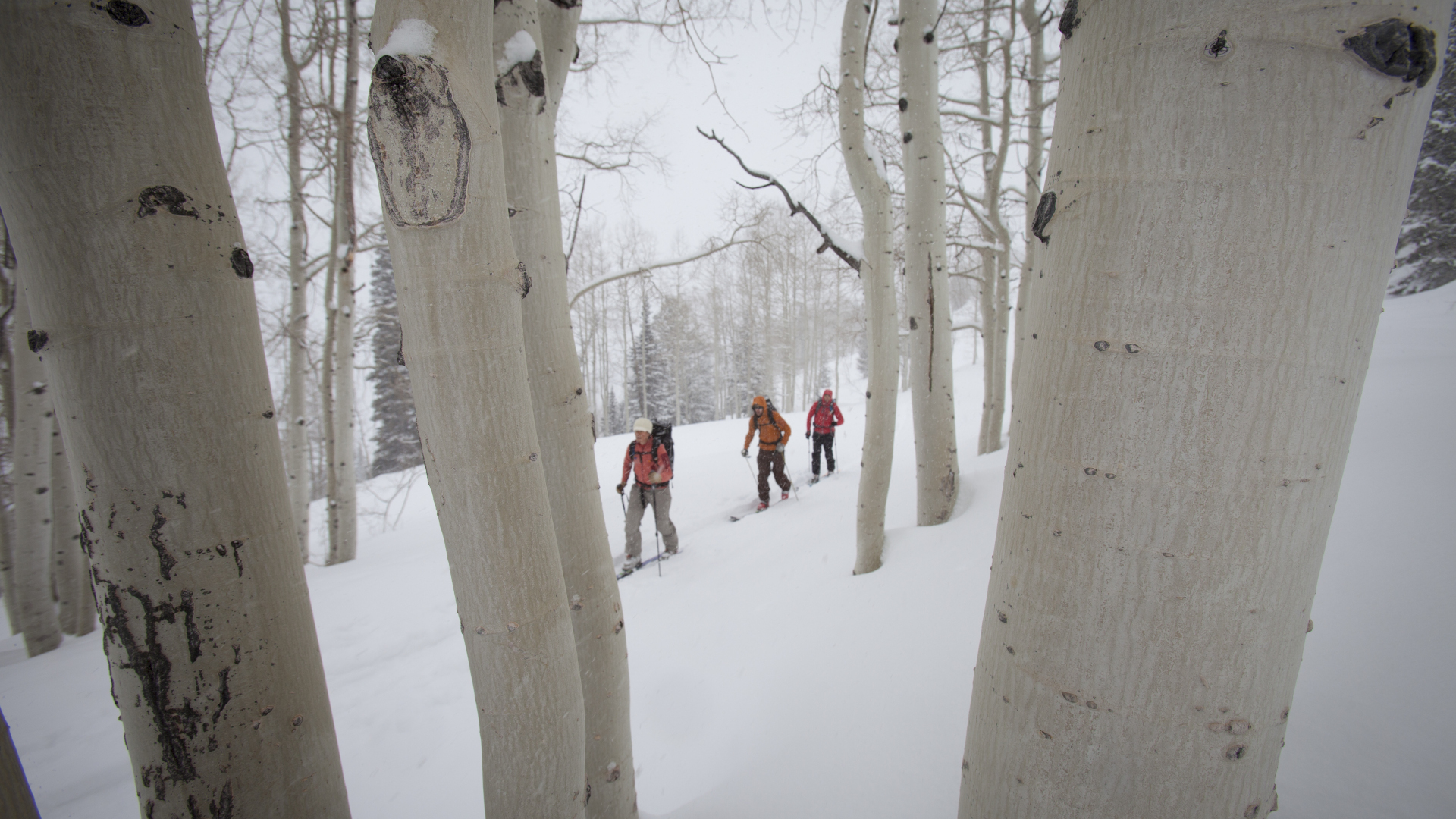
How to hike in snow: going downhill
- On the downhill, the risks of falling are much greater so slow it down.
- Kick your heel hard into the snow with each step and make sure the foot is stable before taking the next step. As in ascent, zigzagging can help with the gradient.
- If the slope becomes very steep or there is some scrambling involved, don’t be afraid to employ the “skootch” by sitting down (ski pants or waterproof trousers are a good idea here), planting your feet downhill then bending your knees to slide your bum down to your feet.
- If the ground is so steep that you have to turn and face it, you've probably strayed into winter mountaineering territory and trying to descend without an ice axe to arrest a potential slide could be disastrous.
- If faced with this situation, try to find a gentler slope to descend.
More tips for success
Here are our 7 tips for success when it comes to hiking in the snow.
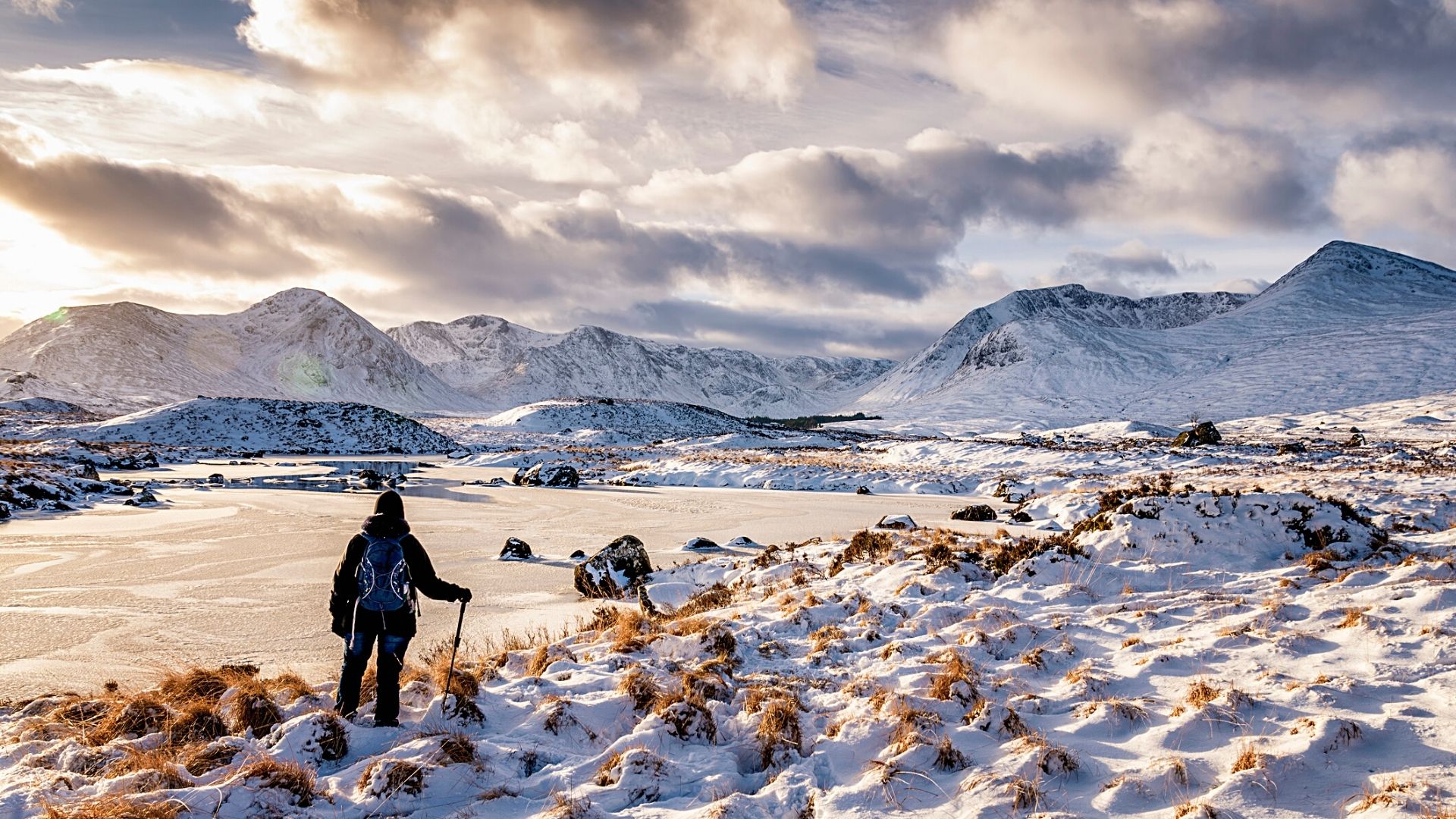
1. Wear winter hiking boots
- Winter hiking boots offer protection from the elements and from rock abrasion
- Their reinforcements allow you to kick into snowy and icy terrain
- Gaiters are also essential for stopping water ingress in deep snow
Winter hiking boots are the best type of footwear for snow. There are definitely people who seem to hike anything in trail running shoes – this is partly because they like being able to feel the trail underfoot – but unless you want wet, cold feet, you’ll be happier with the protection of waterproof hiking boots, which will keep your feet dry and warm and also protect you from bashing your feet on sharp rocks hidden by snow. Winter hiking boots are reinforced in key areas, such as the heel and the toes, to allow you to aggressively kick into snowy and icy ground.
Make sure you get a pair with quality outsoles made by manufacturers like Vibram, with deep treads to provide plenty of grip. Ideally, pair yours with gaiters because if the snow is more than a few inches deep, it will fall inside your boot with each step and you’ll end up with cold, wet feet anyway.
2. Give yourself more time
- Walking in deep snow is much slower going than other kinds of terrain
- Allow longer for the day and pack a headlamp in case you get caught out after dark
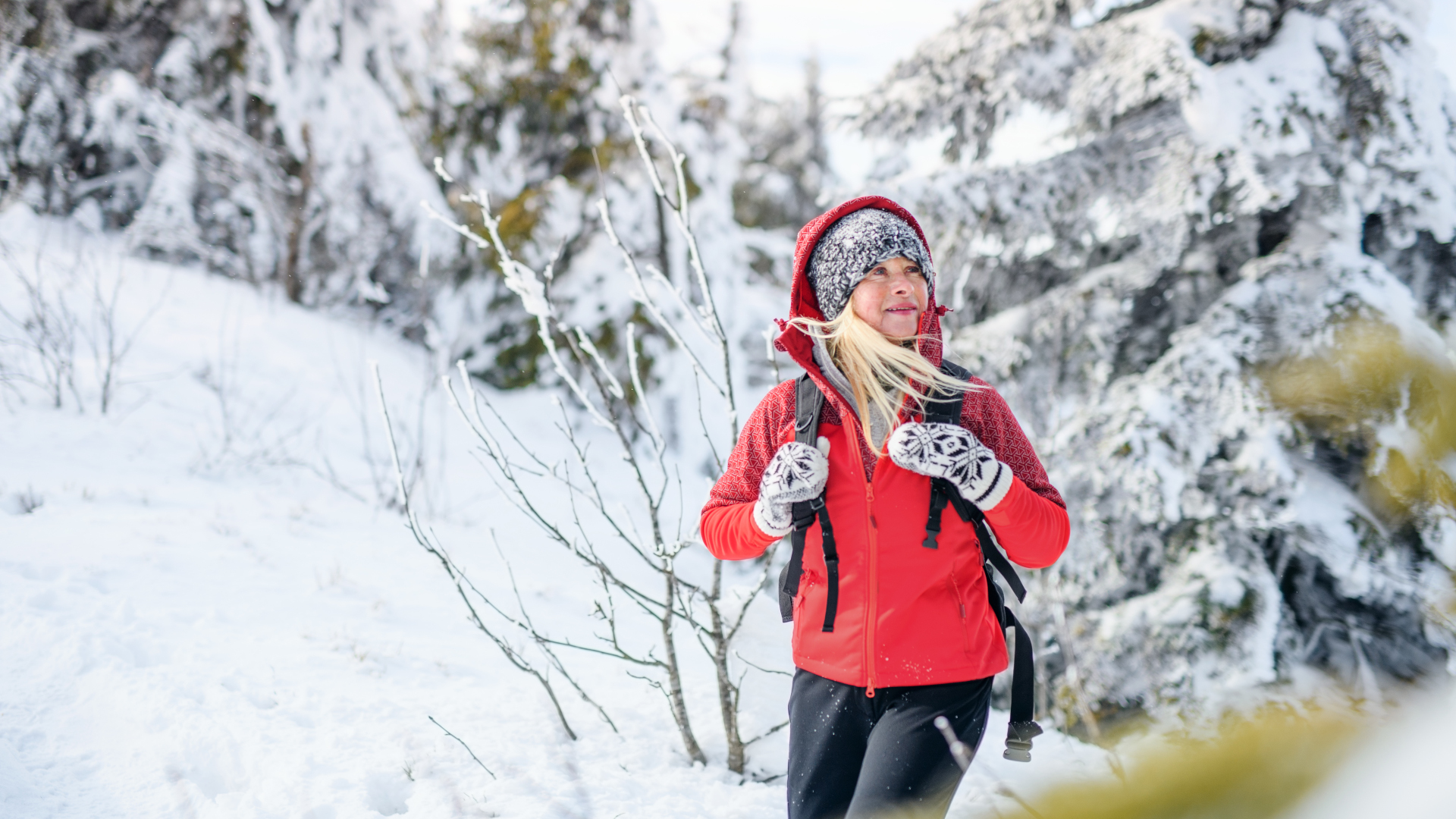
Walking in deep snow is much slower going than walking on dirt or even packed snow, and it will be slower still if you’re breaking trail. Leave more time than usual and also don’t expect to be able to hike as far as you can in summer. It's always worth having a headlamp with spare batteries – or better still, two headlamps – just in case you get caught out after dark.
3. Look for tracks
- If another group have already broken trail, following their footsteps makes the going easier
- Don't just blindly follow the prints though, keep on top of your own navigation
Breaking trail – walking on untouched snow – is hard work, so if someone has already been up the trail before you, it's easier to follow their footprints. They’ve already put in the work for you by packing down the snow with each step, so if you step where they stepped, you usually won’t sink down any further. This also helps you see where there are deep holes or problem spots.
All the latest inspiration, tips and guides to help you plan your next Advnture!
You will, however, need to continue to navigate in case the person you’re following got lost or was taking a different trail so you don’t follow them into a dangerous situation.
4. Take turns breaking trail
- Take turns breaking trail to give each other a rest
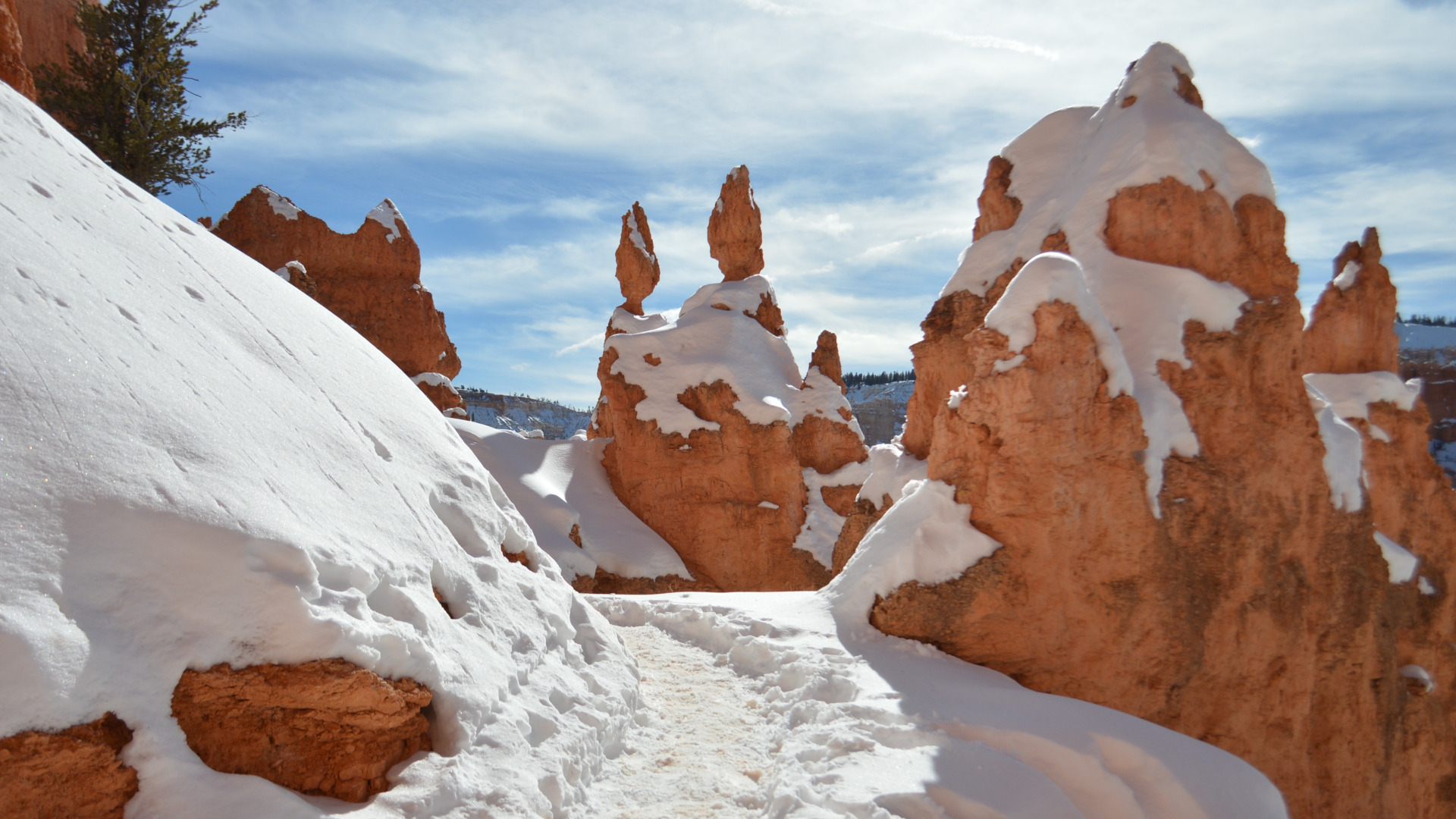
You should really be hiking with friends if you’re out in the snow, so if you can, take turns breaking trail. This is because, forging ahead through the snow can be exhausting if you do it all day. You break trail for about 1/4 mile then trade off with someone else in your group. If you are hiking with your dog, you can let it go ahead and help to break the trail too.
5. Use trekking poles
- Trekking poles will help with stability
- You can use a pole to check the consistency of the terrain in front
- You can use poles to climb back out if you sink into thigh deep snow
- Trekking poles are also very useful for safely crossing rivers
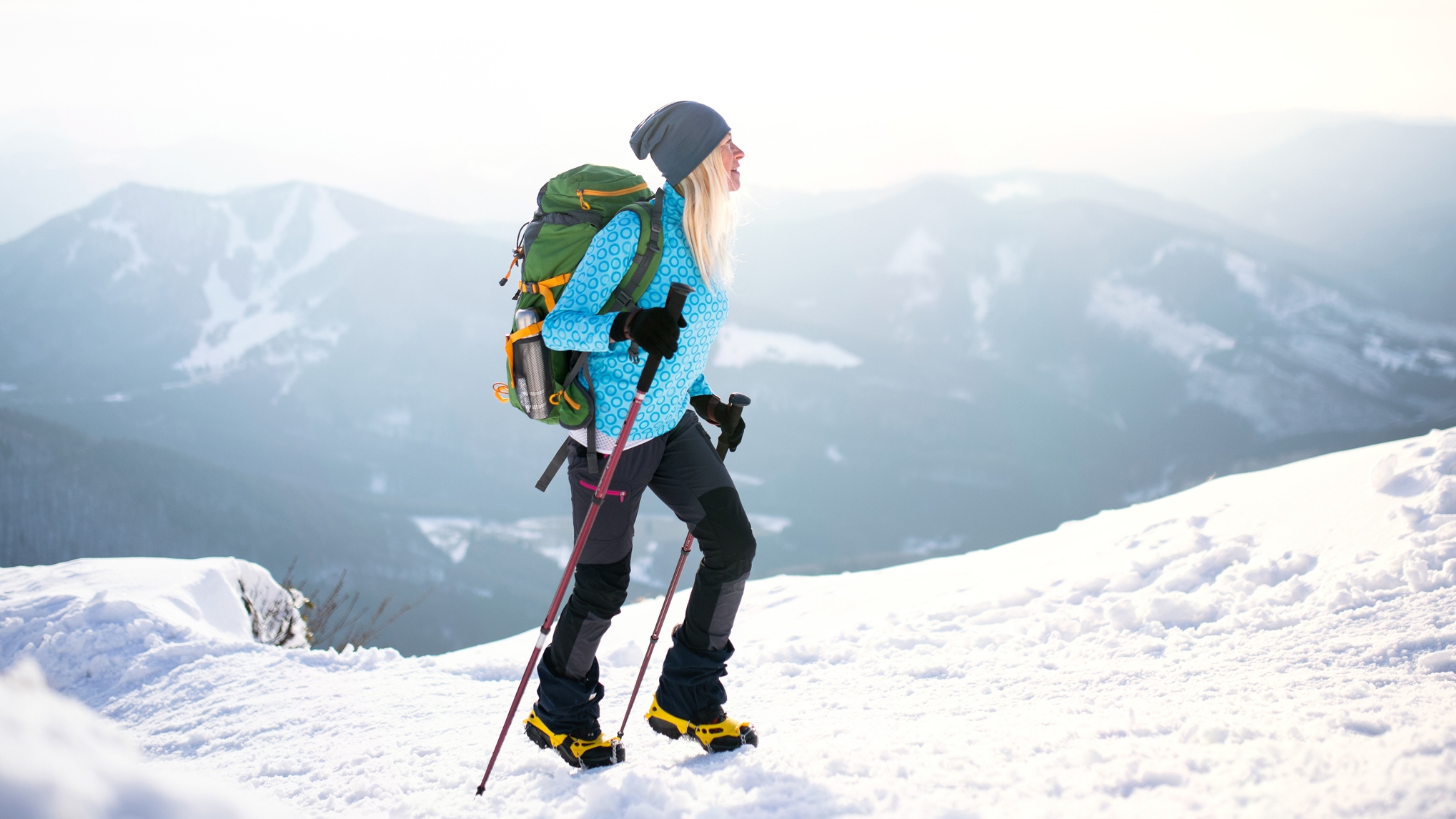
Even if you don’t use trekking poles in summer, they will be your best friend for hiking in snow. You won’t be as stable as you are on dry ground as the earth beneath your feet can move and slide.
Any time you are stepping into untouched snow, you can use your pole to test the ground before your step. Stab your pole into the ground until it touches something solid – this helps determine how deep the snow is so you can be prepared if you’re about to step into something really deep, or take a different route. Also, the chances are no matter how careful you are, your foot will move once you weight it, so plant your poles first to help keep you upright. On the downhill, after you kick your heel in, plant both poles a little in front of you and use your arms to bear some weight and take a little of the strain off your quad muscles.
If you post hole – meaning, sink up to your thigh in deep snow – poles can help you climb back out.
Rivers tend to be higher in the wetter, winter months. Trekking poles are invaluable during river crossings, where they can be planted beneath the water's surface and used as supports.
If you don’t have poles, you’ll definitely want to be wearing waterproof, insulated hiking gloves since in deep snow, chances are you’ll be using your hands as well as your feet.
6. Learn how to navigate
- The ability to navigate using contours is essential, as snow can cover other markers
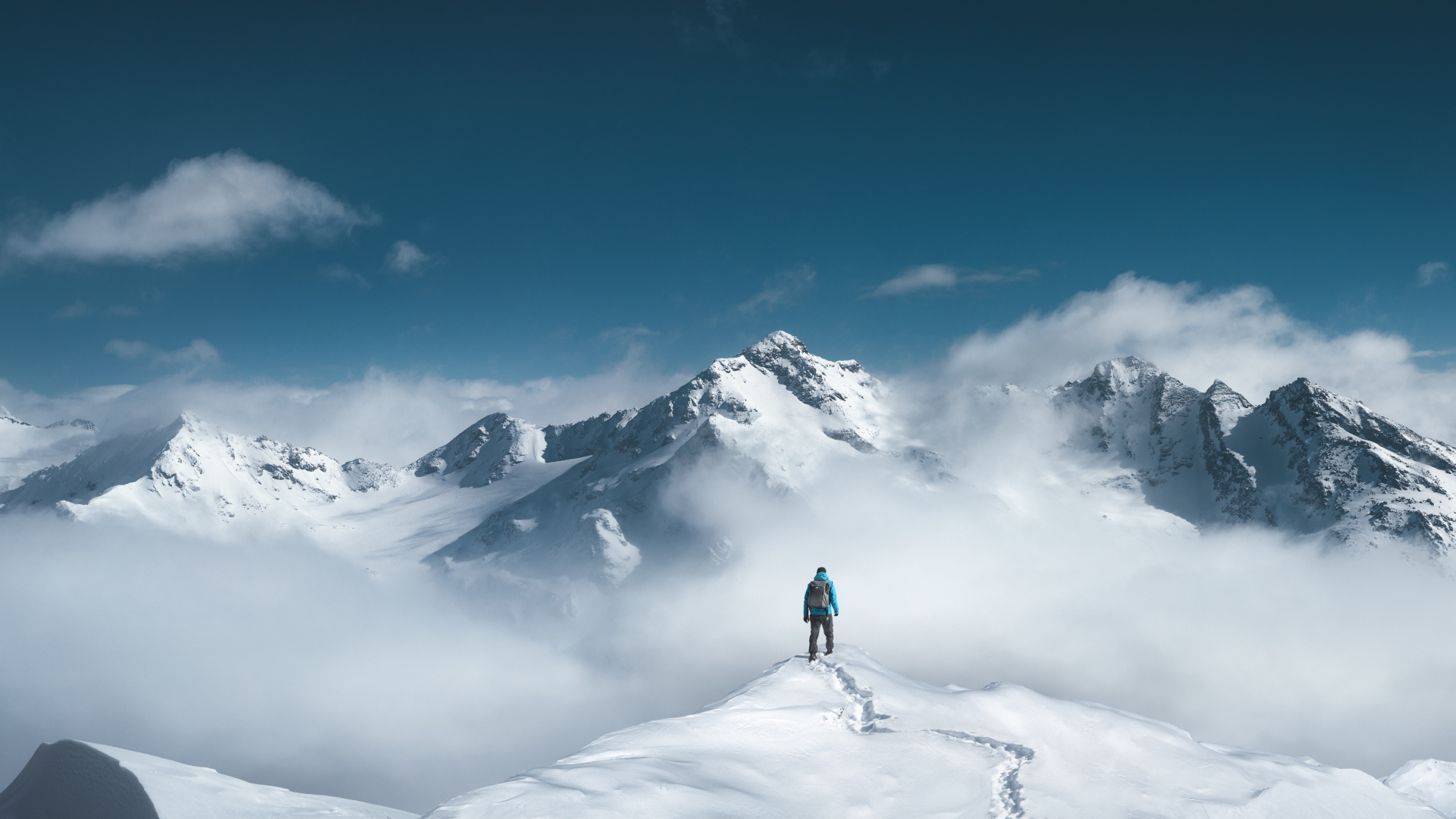
Snow can cover a lot of the markers we use to navigate, and even a familiar trail can become disorienting, especially if you’re up above treeline. You’ll want to navigate, using contours, as you go – not get lost then try to correct yourself – so stop often and get your bearings to make sure you’re heading in the right direction. Start with our articles on how to use a compass and how to read a map and consider taking some skills classes if you’re going to be doing lots of hiking in snow.
7. Know when you need to get a grip
- Snowshoes work as flotation in deep, fluffy snow by spreading your weight out
- Crampons are robust frames with metal spikes for steeper ice
- Microspikes and Yaktrax are lighter rubber frames with spikes for easier terrain
- A walker's ice axe is also essential for steeper, snowy ground
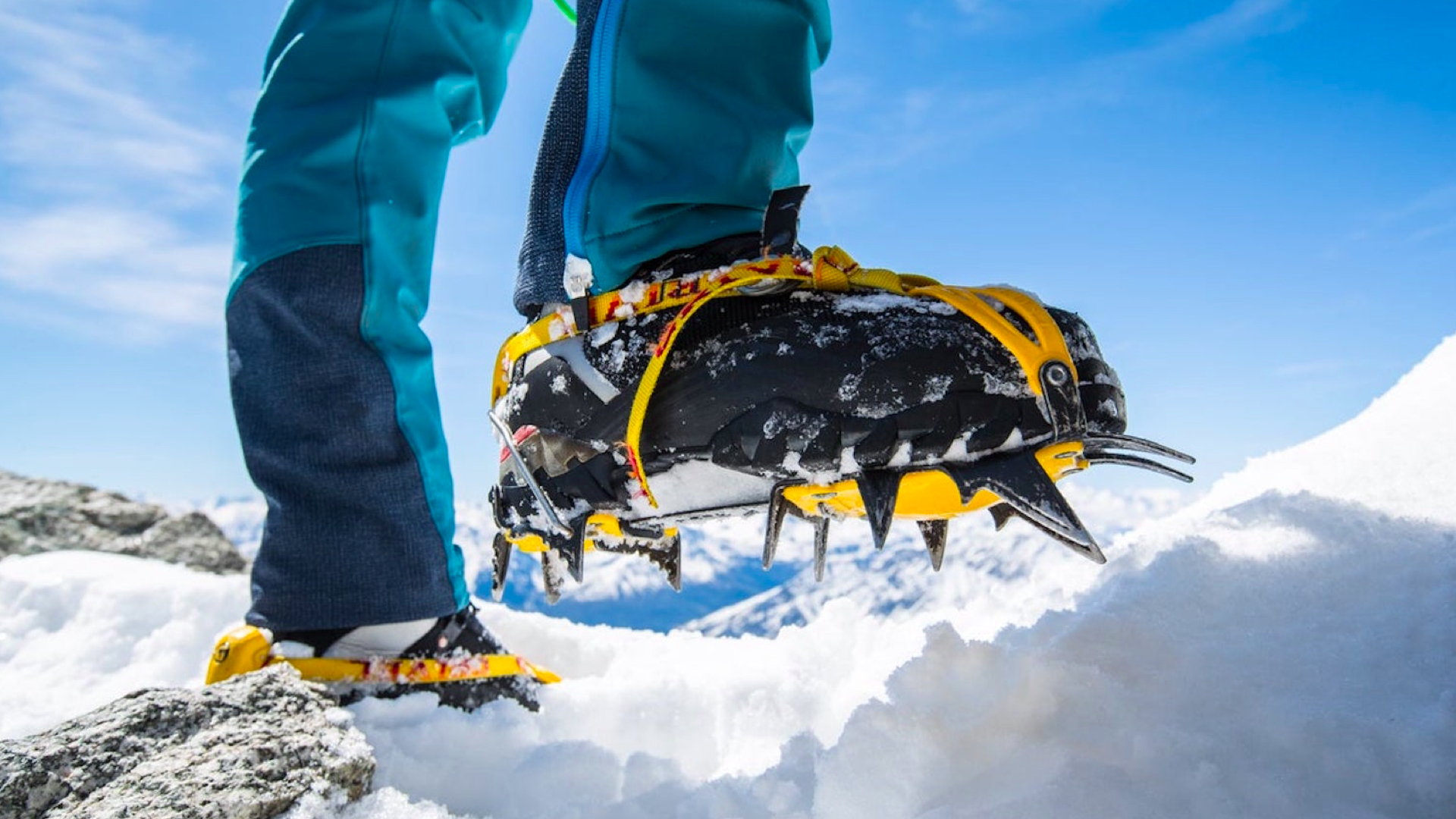
While you won't need grips for all snowy hikes, when you're walking in true winter conditions you can make life easier (and safer) by using walking grips, such as snowshoes, crampons, Yaktrax or microspikes.
Each of these have different applications. Snowshoes work as flotation in deep, fluffy snow by spreading your weight out while.
Crampons are robust frames armed with metal spikes that fit around a boot and give ironclad grip on icy terrain. They are only compatible with matching winter boots. For more information about this, see our guide to types of crampon.
Microspikes are much lighter spikes that can be attached to pretty much any kind of boot. They combine a stretchy thermoplastic rubber frame with stainless steel spikes or chains for gripping snow. They're great on gentle, snowy terrain but aren't suitable for steeper ground. Yaktrax are similar, being lightweight grips made from elastic rubber and steel coils that you pull on and fasten tight over your boots.
It's not just beneath your feet you need to be considering. A walker's ice axe is an essential tool for steeper snowy ground. Knowing how to use an ice axe correctly is crucial here, as being equipped with an ice tool you don't know how to use is potentially more dangerous than not having one at all, as it may give a false sense of safety.
If you're curious about steeper mountaineering ground, we'd recommend booking a course with a certified mountaineering instructor.
Julia Clarke is a staff writer for Advnture.com and the author of the book Restorative Yoga for Beginners. She loves to explore mountains on foot, bike, skis and belay and then recover on the the yoga mat. Julia graduated with a degree in journalism in 2004 and spent eight years working as a radio presenter in Kansas City, Vermont, Boston and New York City before discovering the joys of the Rocky Mountains. She then detoured west to Colorado and enjoyed 11 years teaching yoga in Vail before returning to her hometown of Glasgow, Scotland in 2020 to focus on family and writing.

